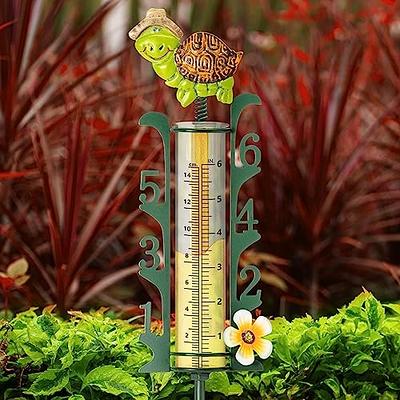DIY Rainfall Gauge: Simple Actions to Make Your Own
Are you curious about tracking rainfall in your area? Producing your very own DIY rain scale is a basic and effective means to determine and tape-record precipitation. With simply a few common materials and some standard actions, you can easily build your own rainfall scale in the house. In this overview, we will provide you with a detailed process to help you create your very own rainfall scale. No demand for any specialized knowledge or tools - this job can be finished by any individual. By adhering to these simple guidelines, you will have a trustworthy tool to determine rains and contribute to your understanding of the regional weather patterns. So, let's start on making your DIY rain gauge today!
Gather Materials
To start constructing your DIY rain scale, collect all the needed products utilizing a detailed listing of products. Having the appropriate materials on hand will certainly make sure the successful production of your rain scale and permit for exact measurements of rains. Gathering these products in advance will certainly simplify the building and construction process and make certain that you have whatever you require to produce your own DIY rain gauge.
Prepare the Container

Mark the Dimension Increments
To precisely measure the amount of rains, accurately noting the measurement increments on your do it yourself rainfall gauge is necessary. Without accurate and clear markings, it would be challenging to establish the exact quantity of rainfall gathered in your rain scale. Below are the actions to note the dimension increments on your rainfall gauge.
First, make a decision on the unit of measurement that you want to use. One of the most common systems for measuring rainfall are inches and millimeters. As soon as you have actually chosen the unit, utilize an irreversible pen or water-proof paint to mark the increments on the side of your rain scale. For inches, you can note every quarter inch or every fifty percent inch, depending upon your preference. For millimeters, you can mark every 10 millimeters or every 20 millimeters.
When noting the increments, it is necessary to guarantee that they are evenly spaced pop over to this site and plainly visible. Utilize a leader or measuring tape to guarantee precision and consistency. In addition, make sure that the markings are resistant to fading or abrading, as direct exposure to the elements might create them to degrade with time.
Place the Rainfall Gauge Outdoors
The rainfall scale should be positioned outdoors to precisely accumulate rains information. The area selected for the rain scale need to be cost-free and open from any type of obstructions that could possibly affect Visit This Link the dimension of rainfall. The Rain Gauge.
In addition, it is vital to place the rain gauge on a stable surface, such as a degree ground or a durable article. This will prevent any kind of motion or tilting of the scale, which could result in unreliable dimensions. It is additionally a good idea to stay clear of putting the gauge near any type of sources of synthetic water, such as sprinklers or drain systems, as this could disrupt the precision of the dimensions.
Screen and Record Rainfall Data
Routine surveillance and recording of rains information is necessary for accurate information analysis and analysis. By tracking rainfall measurements, you can acquire important insights into weather condition patterns, climate trends, and water source management. To properly keep an eye on and tape-record rainfall information, it is necessary to develop a regular and keep constant methods.
To start with, make sure that your rainfall gauge is placed in an open location far from challenges such as trees or buildings that may obstruct rains. Additionally, see to it the rain gauge is level and firmly anchored to avoid any type of activity that could affect the precision of the measurements.

When tape-recording the rainfall data, it is essential to note the date and time of each dimension. Utilize a ruler or a measuring adhere to identify the rains deepness in the rainfall scale, and document this information accurately.
To blog here make certain the accuracy of the measurements, it is advised to empty the rainfall gauge after each recording. This will avoid any overflow or dissipation from affecting succeeding dimensions.
Final Thought
In final thought, creating a DIY rainfall scale is a basic and practical means to check and videotape rainfall information (The Rain Gauge). By following the steps outlined in this article, you can easily collect materials, prepare the container, mark the dimension increments, and put the rain gauge outdoors. Consistently keeping an eye on and tape-recording rains data can offer beneficial info for various purposes
Having the right products on hand will certainly ensure the effective creation of your rainfall scale and enable for exact dimensions of rains.To properly measure the amount of rainfall, properly noting the measurement increments on your DIY rain scale is essential.The rainfall scale need to be placed outdoors to properly accumulate rainfall data. The location selected for the rain gauge must be open and cost-free from any type of obstructions that can possibly influence the dimension of rainfall.In conclusion, producing a DIY rainfall gauge is a functional and basic way to keep an eye on and videotape rainfall information.